Neighborhood Hawks
The convenience of the high trees!
The air’s buoyancy and the sun’s ray
Are of advantage to me;
And the earth’s face upward for my inspection.My feet are locked upon the rough bark.
It took the whole of Creation
To produce my foot, my each feather:
Now I hold Creation in my footOr fly up, and revolve it all slowly –
I kill where I please because it is all mine.
(From “Hawk Roosting,” by Ted Hughes. See the rest of the poem here.)
The girls and I saw this hawk in a roadside tree on our way out to run some errands. I had my camera with me, so I pulled over and took a few pictures. It’s a large, chunky hawk, and I assumed it was a red-tail, but since its tail isn’t red we looked through the bird book to check out other options.
The only candidate we found was the Swainson’s hawk, but the Swainson belongs west of here. It also migrates in a large group or “kettle” of other hawks — sometimes up to thousands. (Wouldn’t that be an amazing sight? A thousand hawks sweeping past overhead?) This bird is alone, late in the season, in the northeast.
My father came to the rescue, identifying it as a young red-tailed hawk still wearing protectively-colored plumage. The brown on its back will even out, and its tail will redden, as it matures.
Red-tails are pretty common around here. We see them often in highway medians, and in the trees alongside the highway, surveying the grasses for mice. But to see one this close up — and to be held in that fierce glare — was a thrill.
Over the summer, we began to worry that we saw so few red-tails perched on dead trees or soaring overhead. We were used to seeing one alongside the road we take into town, and it wasn’t there. We wondered if they were being driven out by a kind of hawk we’d never noticed before: a broad-winged hawk.
I saw this one in the Adirondacks in July, and when we returned home we discovered that we had a pair of them in the neighborhood. They’re buteos, like the red-tail — they have chunky bodies and thick wings, and they soar. They’re smaller than the red-tail. But the most distinctive thing about them to us was their incessant “squeaky-door” call throughout July. Sometimes we’d see them circling together and occasionally darting at each other high above. And sometimes, we’d see them hunting in the brush that borders our back yard.
We haven’t seen them in awhile. They go south for the winter, traveling in a kettle, and I assume they’ve left. Interestingly, we are seeing many more red-tails now, too. I wondered, is it because they can move into territory vacated by the broad-wings, or because the leaves are down and we can simply see better who has been in the treetops all along? This site suggests a third alternative: red-tails “disappear” every summer because they move to more wooded locations. As with so many things, I just haven’t really paid attention before.
Last but not least comes the Cooper’s hawk. We’ve known about this hawk for several years; it comes through the neighborhood periodically, and we feel the dread of all songbird-lovers when it casts its shadow over the lawn. The redtails and broad-wings hunt small mammals and snakes mostly, but the Cooper’s hawk hunts songbirds as well — as we witnessed from the kitchen window one night in early July.
Cooper’s hawks are accipiters; they don’t soar like buteos. We see them fly close to the ground, and my husband tells me they are capitalizing on the natural buoyancy of “ground effect.” They have longer tails and shoot like an arrow at their prey.
Of these three types of hawks, we’ve only observed the Cooper actually capturing prey — once a robin (above), and once, a chipmunk. Maybe that’s why of the three, it strikes us as the most cruel looking.
I seem to be permanently conflicted about hawks — in awe of their beauty, power, and warrior-like ferocity, yet chilled by their proficiency (if they are going to survive) as killers. I think Ted Hughes captures some of that conflict between fascinated admiration and horror in his poem. Maybe the hawk’s perspective is as Hughes imagines it: “the world exists for me.” Maybe hawks need that kind of megalomania to survive. It’s only dangerous, the poem implies, if a person, with human capacities for reflection and compassion, adopts that attitude toward the world. We don’t expect non-human species to be “humane.” But humans better be — or else.
We look at hawks and feel the kinship of lordly species — creatures with power over other creatures. Yet maybe we sense the implicit warning, too, against the possibility of becoming like the hawk in Hughes’ poem: “Now I hold Creation in my foot… I kill where I please because it is all mine.”
Poetry Friday is at My Juicy Little Universe today.
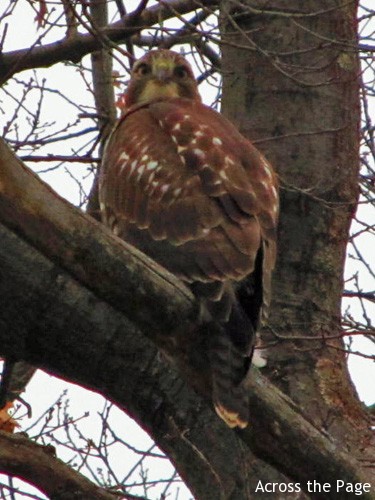
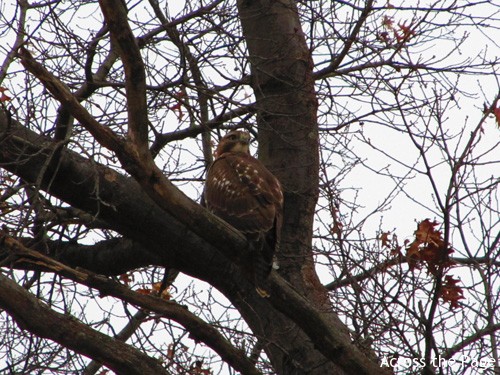
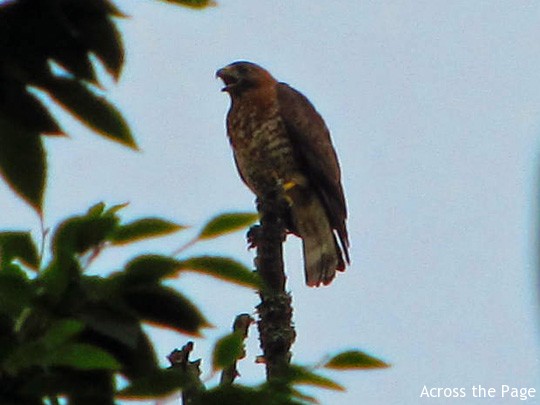
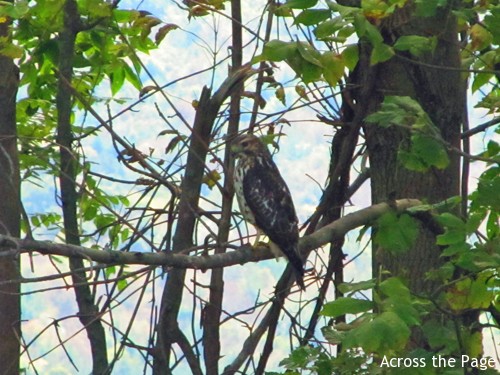
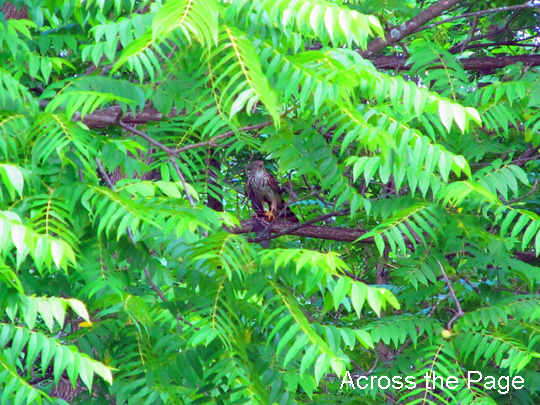
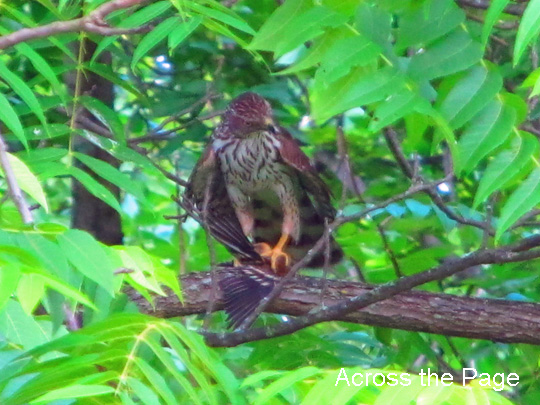
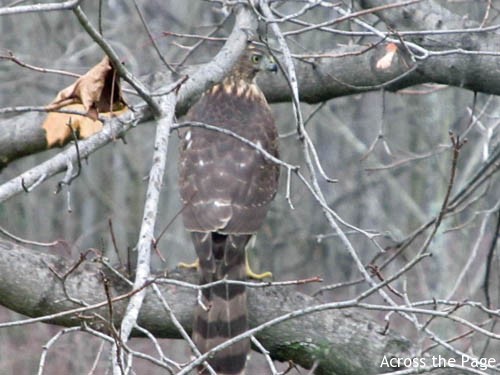
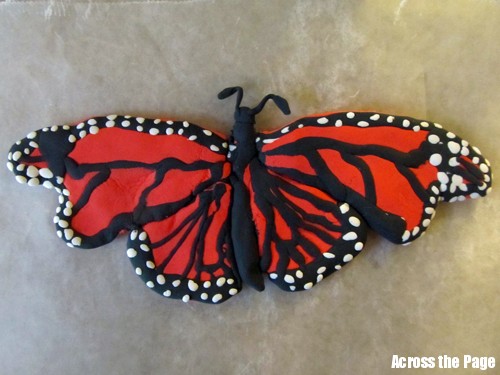
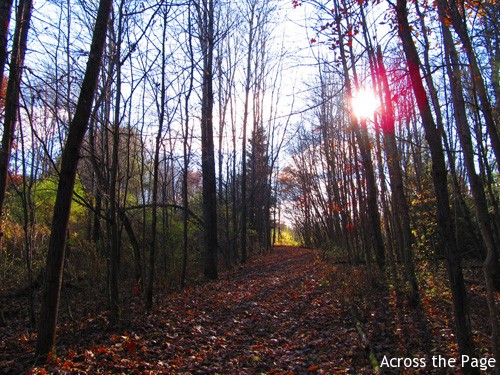

6 Comments
Barbara H.
We see them soaring overhead, but never see them close enough to see any kind of detail. Interesting reflection on the poem.
Robyn Hood Black
Terrific post, Janet! I love hawks, and we have a few regular varieties here in north Georgia such as the red-tailed, red-shouldered, and Cooper’s. I understand the ambivalence – I love cardinals, too, etc. – birds of prey are such fierce predators. Thanks for sharing the Ted Hughes poem.
Linda Baie
What a wonderful piece you’ve written about hawks and the photos you’ve taken too do show the differences as you’ve outlined. I live beside a park, & now & then there is a Cooper’s hawk on one of my fence posts, rendering the whole neighborhood ‘deathly’ still. It (they) know to be quiet. Even on the post, rather low compared to a tree, the hawk is so powerful, as the poem by Hughes suggests.
Myra from GatheringBooks
These are the lines that spoke to me:
“It took the whole of Creation
To produce my foot, my each feather:
Now I hold Creation in my foot
Or fly up, and revolve it all slowly –
I kill where I please because it is all mine.”
I lovelovelove the photos. I haven’t seen hawks up close and personal, but I am overwhelmed by their kingly/lordly dominion over all the other species. This is a fitting tribute to their majesty.
Tabatha
Great post, Janet. Both informative and thought-provoking.
Mary Lee
Great post! We don’t have quite so many varieties of hawks in our neighborhood, but we have had a nesting pair of Cooper’s hawks down the street, and someone (Cooper’s? Red Tail?) reduced our backyard chipmunk population by one this fall! We stood at the window cheering. The craziest thing happened as the hawk stooped on its prey — two squirrels came quite close and harrassed the hawk while it was down on the ground! Maybe they knew they were safe since it already had prey? Maybe that was behavior to get it to leave the prey (maybe instinctively thinking it could be one of their own)? Or???